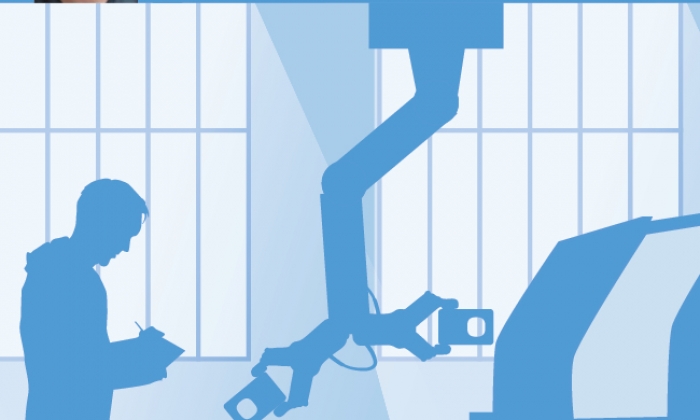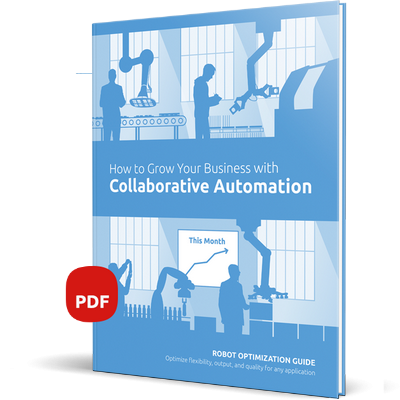#ThoughtsOnRobots: Pierre de Giorgio


Pierre de Giorgio, President, BlueBay Automation - answering our questions on robotics
Why do you think the sale of collaborative robots has increased in recent years?
People are much more aware of collaborative robots nowadays than previously and that has fuelled the growth of sales. But to be honest, adoption in the market has been slower than we would have liked, and I think this interest will grow in the future as people learn more about the robots and we get better at educating the customers about the benefits of collaborative applications.
In which markets do you experience the biggest interest for collaborative robots?
In our market we interact with customers from many different industries. The exciting thing for us is that we are seeing interest from customers who are new to robotics and automation in general and industries where robots have not traditionally been considered, especially in companies working with material handling, packaging and assembly.
How do you see the current trends within the field of end-of-arm tooling?
The biggest trend right now is the transition from complex to simple in the design of the end-of-arm tooling. Traditionally, end effectors would tend to be very detailed and complex, but now the end effectors are very simple and easy to install. Another trend is that end effectors are moving beyond the traditional gripper and vacuum solutions and becoming an integral part of new working processes.
Where do you see the biggest potential for collaborative robots in the future?
Flexible automation is the fastest-growing segment in automation in our market, and I believe it has great potential in the future. In recent months, we have shifted a lot of our focus towards this in regard to training and marketing. As far as working processes go, welding is a big thing and will remain so, especially in the automotive industry. But I think there is also great potential in applications for drilling and screwing processes. Many manual processes for finishing and polishing have considerable potential as well.
What are the biggest challenges the collaborative robot industry will face in the future?
The biggest challenge is that there are so many collaborative robots coming onto the market that the lack of education can be an issue. It can be confusing with so many products, and it is crucial that the industry makes concerted efforts towards educating and training the customers about the products. Also, it is important that we do not present collaborative robots as the one and only solution to every problem – just because an application can utilise a collaborative robot, it doesn’t mean the application is necessarily collaborative. It is critical that due diligence by both the supplier and the end user is performed to ensure a proper risk assessment is performed on the overall application.
Do you have a “favourite” collaborative robot or application?
My favourite is an application we recently built for an electronics company. The application included multiple collaborative robots with three cells working together and is used to assemble and test electrical connectors. It was very challenging to build, and for me the application shows how collaborative applications can create value if they are designed and implemented correctly. Also, the application demonstrates that when engineered properly, customers’ expectations can be not only met, but exceeded.
What has surprised you the most working in the robot industry?
What has surprised me the most in the business is that many people are fearful of deploying robots because they expect it to be complicated and difficult. Of course, there can be difficulties, but in reality, today’s robots are often easy to deploy. It’s not rocket science – it’s a simple low-risk solution.
---------------------------------------------------------------------------------------
#ThoughtsOnRobots
#ThoughtsOnRobots is a series of blogposts on onrobot.com where world-leading experts, industry influencers and companies answer questions about their views on the industry, trends, challenges and potentials.

|
如何使用協作式應用拓展業務
隨著更加智慧、更具自我調整工具的發展,機械人現在可以以更高的速度、強度、安全性和精準度運行,完成大量的任務,同時最大限度地提高投資回報率。透過下載我們的免費電子書,詳細瞭解如何以更低的成本實現更快的生產。
獲得免費電子書
|

|

